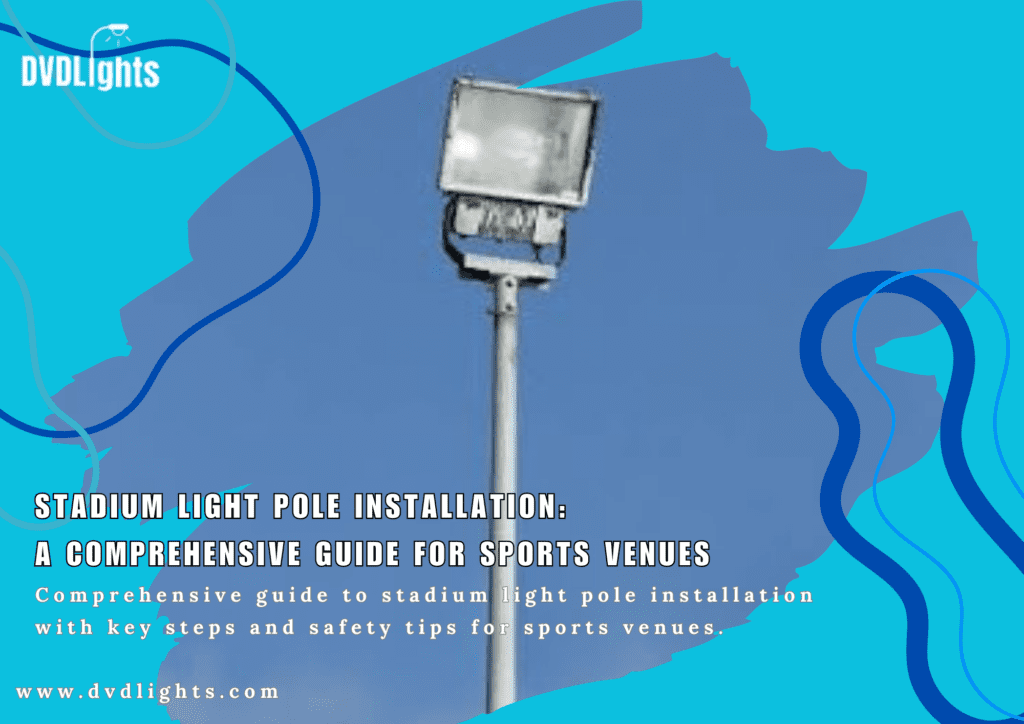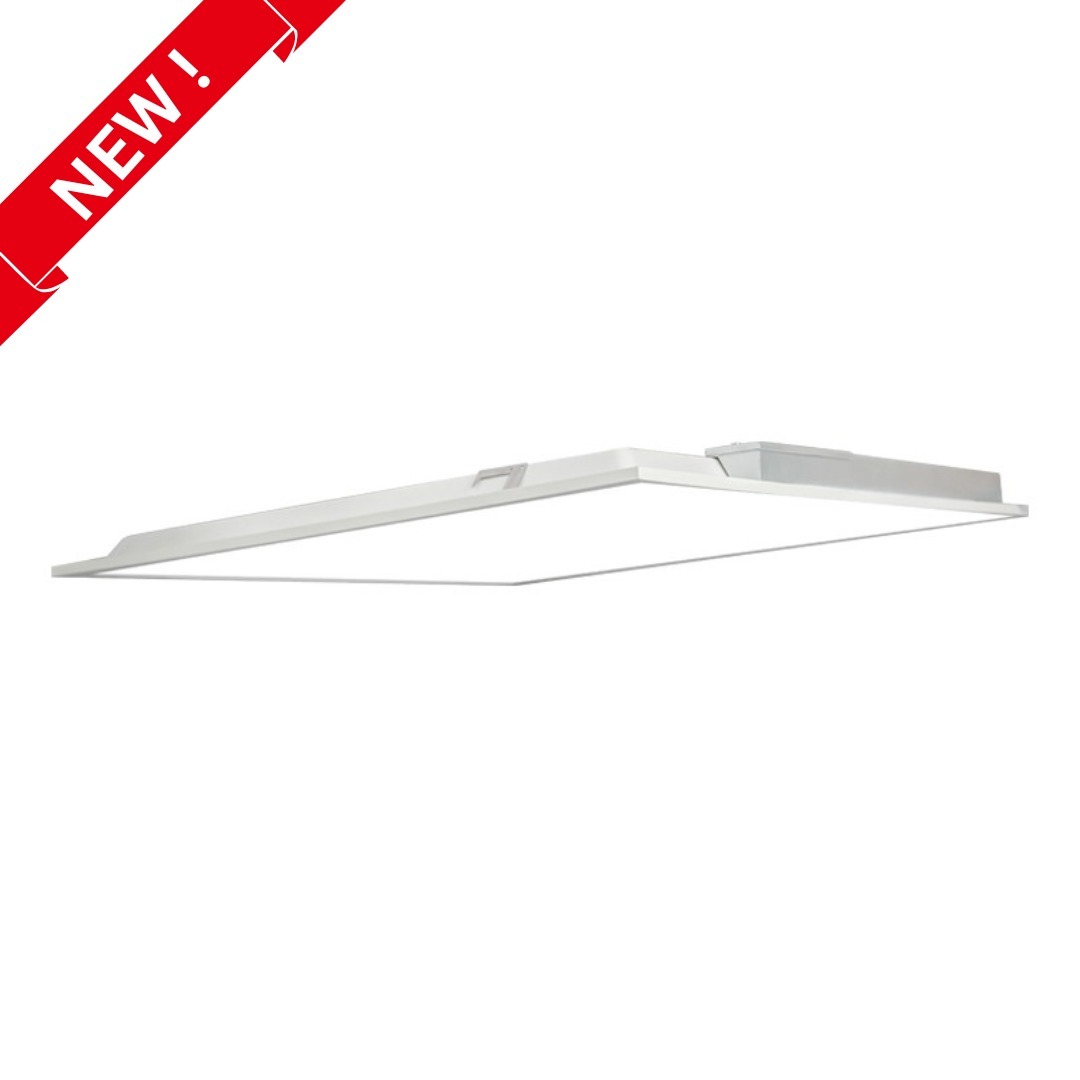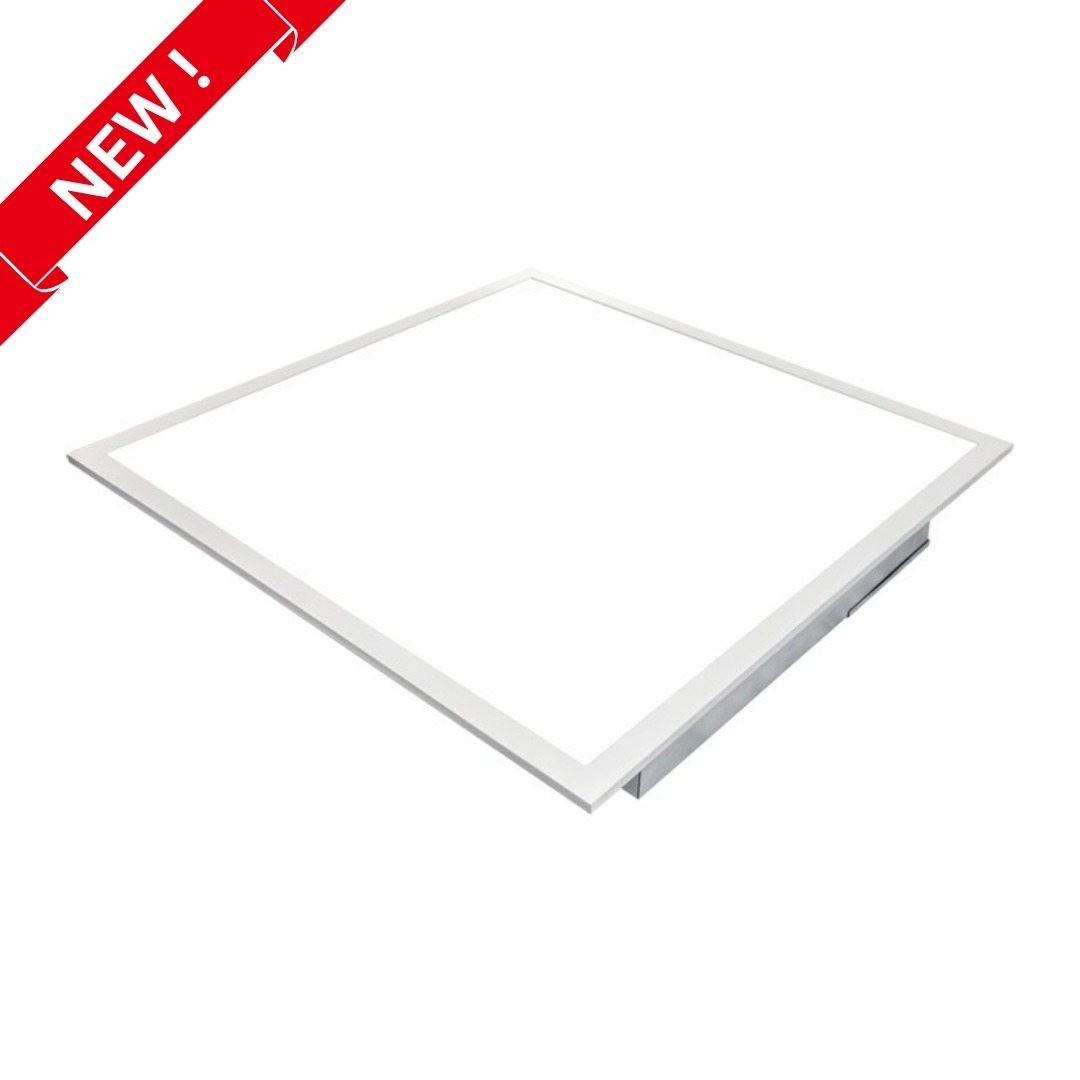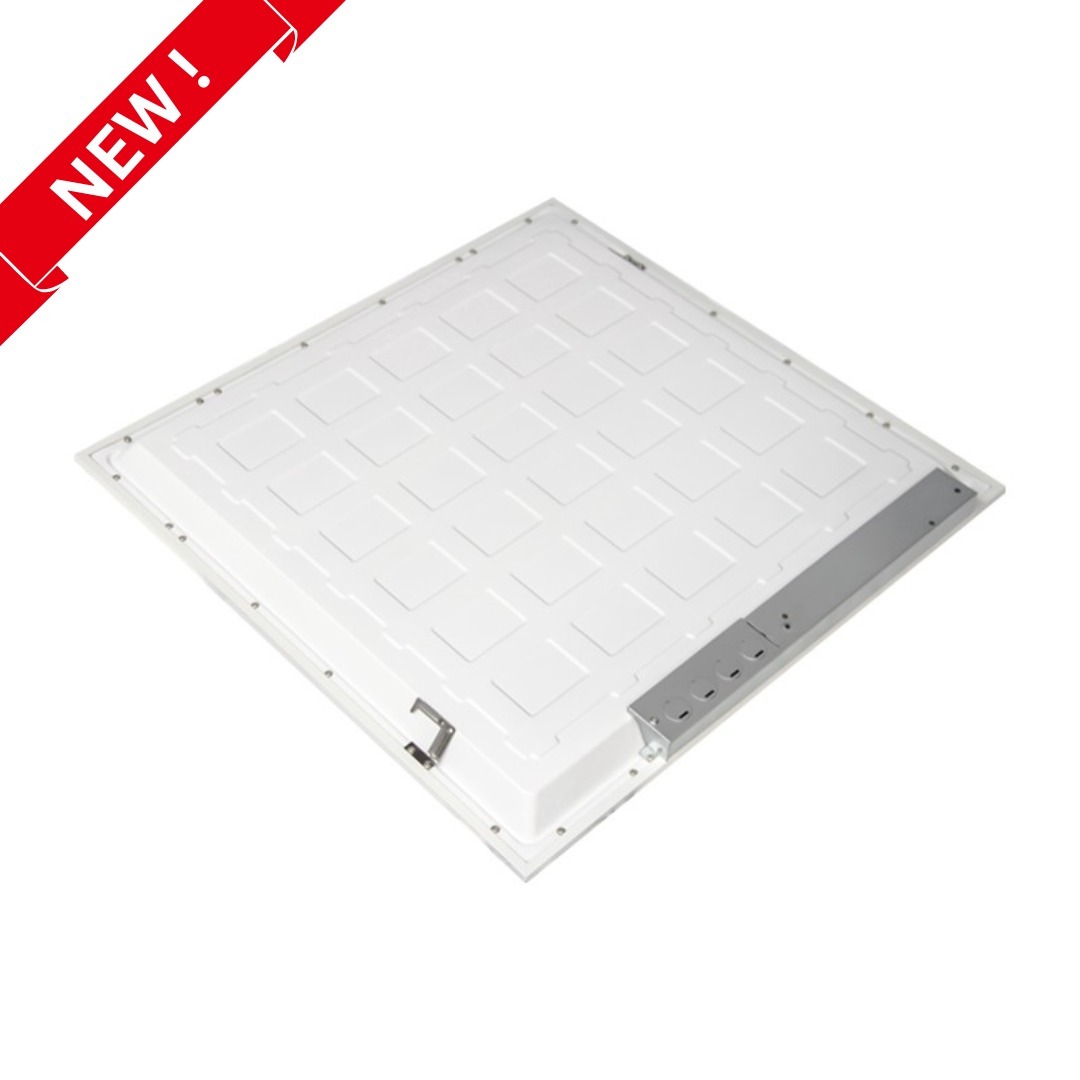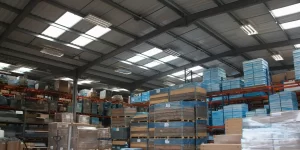Stadium lighting plays an essential role in enhancing the visibility, safety, and experience of athletes, fans, and broadcasters during live events. Whether you are installing Stadium Lights for Football Fields, Soccer Fields, Tennis Court Stadium Lighting, or Professional Sports Stadium Lighting, proper light pole installation is critical to ensuring optimal light distribution, energy efficiency, and the overall performance of the lighting system. This guide will take you through the key steps and considerations in stadium light pole installation, focusing on achieving professional standards for both small and large-scale venues.
From the design phase to final installation, there are several factors to consider, including pole height, placement, and structural integrity. Each step requires a combination of engineering precision, lighting expertise, and adherence to safety regulations.
Understanding Stadium Light Pole Installation
Installing light poles in a stadium setting is not just about placing poles randomly around the field. It requires careful planning to ensure uniform lighting across the entire playing surface and surrounding spectator areas. Inadequate planning can result in shadowy spots, excessive glare, or insufficient lighting, all of which can affect both the players’ performance and the viewing experience.
Several key components are involved in the successful installation of light poles:
- Pole Height: The height of the poles is a crucial determinant of how effectively light covers the playing area. Taller poles, usually ranging from 40 to 100 feet, are necessary for larger sports fields such as Stadium Lights for Football Fields or Soccer Fields, whereas shorter poles are suitable for smaller venues like tennis courts or school sports fields.
- Pole Placement and Spacing: The spacing between the poles is equally important. Placing them too far apart can leave certain areas in shadow, while too close may result in over-lighting specific sections, leading to discomfort for players and spectators. For example, Stadium Lights for Soccer Fields must be strategically placed around the perimeter to provide even illumination for the entire field.
- Structural Stability: Stadium light poles must be installed with robust foundations that can withstand environmental factors like high winds, rain, and even seismic activity. Ensuring structural integrity during the stadium light pole installation process helps prevent future failures or safety hazards. Proper anchoring is essential, as light poles are subject to significant weight and stress from the lights and weather conditions.
- Material Quality: Light poles are typically made from high-quality steel or aluminum to offer longevity and durability. These materials are corrosion-resistant and strong enough to support the weight of modern LED Lights for Arena Lighting systems.
Photo from muangsatun via iStock
Key Pre-Installation Considerations
Before any ground is broken, comprehensive planning and design are critical to the success of the project. Installing stadium light poles requires more than just following a manual; it involves tailoring the installation to meet the specific needs of the stadium and sport being played.
Lighting Design and Layout
The layout of the stadium lighting must be precisely designed to meet the venue’s specific requirements. Whether it’s a Tennis Court Stadium Lighting project or Professional Sports Stadium Lighting, the layout needs to provide uniform light distribution without excessive glare or dark spots. This phase typically involves collaborating with a lighting designer or specialist who can create a detailed blueprint for where each pole should be placed, how high they should stand, and what type of lighting fixtures will be used.
For larger stadiums with Stadium Lights for Football Fields, more poles and higher power lights will be needed compared to smaller venues like School Sports Field Lighting Solutions. Proper design will ensure that the light coverage is appropriate for both the players on the field and the spectators in the stands.
Photo from Muanpare wanpen via iStock
Soil Testing and Foundation Design
The stability of the light poles depends heavily on the foundation they are installed on. A detailed soil analysis must be conducted to determine the appropriate foundation depth and material. In areas with soft or unstable soil, deeper foundations or additional support structures may be necessary to prevent the poles from shifting or collapsing.
This phase is critical for ensuring long-term stability, especially for venues exposed to harsh weather conditions. The last thing you want is for a light pole to shift or collapse due to poor foundation work.
Power Supply and Electrical Infrastructure
Another key pre-installation task is ensuring that the electrical infrastructure is in place. Stadium Lights for Football Fields or Tennis Court Stadium Lighting require a consistent and stable power supply to operate efficiently. Before installing the poles, you must plan for the electrical cables, circuits, switches, and other components necessary to power the lights. Modern LED Lights for Arena Lighting are energy-efficient but still require proper electrical planning to avoid overloads or power failures.
Installation Process for Stadium Light Poles
With the planning and groundwork completed, it’s time to proceed with the physical installation of the light poles. Each step of the installation process must be executed with precision to ensure that the lighting system will function optimally.
Photo from Custo609 via iStock
Excavation and Foundation Setup
The first step in installing stadium light poles involves digging holes for the foundation. The depth of these holes will depend on the height and weight of the poles being installed. Typically, the taller the pole, the deeper the foundation needs to be to ensure stability. In most cases, concrete is used to anchor the poles, and steel reinforcement may be added for extra stability in larger venues or areas prone to high winds.
The poles must be installed on a perfectly level foundation to avoid leaning or shifting over time. Proper excavation and foundation setup ensure that the poles can withstand environmental stresses and the weight of the LED Lights for Arena Lighting.
Pole Assembly and Lifting
After the foundations are ready, the light poles are assembled. Depending on their size and design, they may either be assembled on the ground and then lifted into place or assembled incrementally as they are installed. Cranes or other heavy machinery are typically used to lift the poles into position, especially for larger stadiums.
The light fixtures are often attached to the poles before they are raised to avoid complications at higher elevations. In some cases, the lights may be installed after the poles are erected, particularly in School Sports Field Lighting Solutions, where the poles may be smaller and easier to work with.
Electrical Connections
Once the poles are in place, the next step is to connect the wiring and power supply. This phase involves routing the electrical cables from the power source to each light pole, installing control systems, and testing the lights to ensure they are functioning correctly.
For modern LED Lights for Arena Lighting, proper wiring and electrical connections are essential for optimizing energy efficiency and ensuring that the lights operate reliably.
Final Adjustments and Testing
Once the poles and lights are installed, the entire system must be tested to ensure that it meets the desired lighting levels. Adjustments to the angle and direction of the lights may be necessary to achieve optimal coverage. This phase may take several days to complete, depending on the size of the venue and the complexity of the system.
In larger venues with Professional Sports Stadium Lighting, the goal is to achieve uniform illumination across the entire field or court. For smaller venues like tennis courts or school fields, adjustments may be more straightforward but equally important.
Post-Installation Maintenance
After the light poles are installed, regular maintenance is essential to keep the system running efficiently. Maintenance of Stadium LED Lights includes periodic inspections to check for any issues with the poles, wiring, or lighting fixtures.
Here are some LED Stadium Light Maintenance Tips:
- Clean the Light Fixtures: Dust, debris, and environmental pollutants can accumulate on the light fixtures, reducing their brightness. Regular cleaning helps maintain optimal light output.
- Inspect the Poles for Damage: Over time, light poles may experience wear and tear from the elements. Regular inspections can help detect any structural issues early before they become serious.
- Check Electrical Systems: Regularly inspecting the wiring and electrical components helps prevent power surges, shorts, or other electrical issues that could impact the performance of the lights.
Advantages of Proper Stadium Light Pole Installation
When done correctly, stadium light pole installation provides numerous benefits for sports venues:
- Optimal Visibility: Properly installed light poles ensure even illumination, eliminating dark spots and glare for both players and spectators.
- Energy Efficiency: Modern LED Lights for Arena Lighting are more energy-efficient, reducing operational costs while providing superior lighting performance.
- Longevity: Correct installation ensures that the poles and lights will last longer, requiring less frequent maintenance and replacements.
- Safety: Well-installed poles are stable and secure, minimizing the risk of accidents or system failures during games or events.
Photo from fotocelia via iStock
FAQs
- What is the ideal height for stadium light poles?
- The height of the poles depends on the size of the venue. For large fields, like Stadium Lights for Football Fields, poles may range from 40 to 100 feet. Smaller venues may require shorter poles.
- Can stadium light poles withstand extreme weather conditions?
- Yes, when properly installed with a strong foundation and made from durable materials like steel or aluminum, stadium light poles can withstand harsh weather, including high winds and heavy rain.
- How often should stadium light poles be inspected?
- Light poles should be inspected at least once a year to ensure there are no structural or electrical issues. Regular inspections help extend the lifespan of the lighting system.
- What is the lifespan of LED stadium lights?
- LED Lights for Arena Lighting typically have a lifespan of 50,000 to 100,000 hours, depending on usage and maintenance. This makes them a long-term solution for stadium lighting.
- Can I install stadium light poles myself?
- Installing stadium light poles is a complex task that requires professional expertise. It is highly recommended to hire experienced contractors to ensure the job is done safely and correctly.
Conclusion
Stadium light pole installation is a critical component in ensuring the success of any sports venue, whether it’s for Football Fields, Soccer Fields, Tennis Court Stadium Lighting, or Professional Sports Stadium Lighting. The correct installation of these poles not only enhances visibility on the field but also improves the experience for fans, broadcasters, and athletes alike. Achieving the right balance of pole height, spacing, and foundation strength ensures uniform lighting coverage, reduces the potential for shadows or glare, and minimizes energy wastage through efficient use of modern LED Lights for Arena Lighting.

